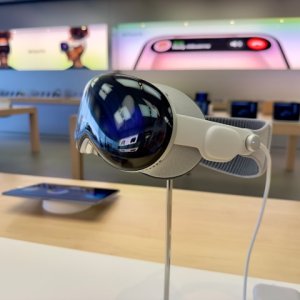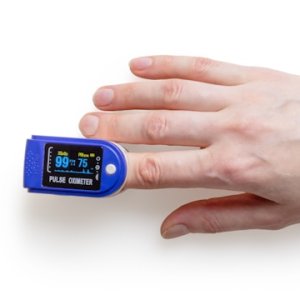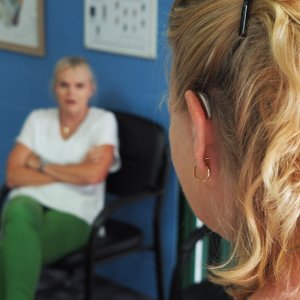Cost-Effective Diagnostic Solutions for Smart Health Systems

Cost-Effective Diagnostic Solutions for Smart Health Systems

Cost-Effective Diagnostic Solutions for Smart Health Systems

STORY INLINE POST
Q: PROSPERiA provides AI-based solutions related to diabetes and hypertension. What factors do your algorithms consider to deliver results?
AN: PROSPERiA develops tools to identify individuals with undiagnosed diabetes, high vulnerability to the disease, and already diagnosed patients at risk of developing related complications. Once we identify a patient at risk, we can connect them with specialists to promptly prevent and/or treat their disease.
The first step is carried out by an AI-based risk calculator, in which people answer questions related to their habits, height and weight, socioeconomic status and background of chronic disease prevalence, among other variables. With this information, our AI algorithms calculate a score that determines if the individual is at low, middle or high risk of having the disease. For instance, the platform calculates the risk of having diabetes, hypertension or sight-related complications. The goal of the calculator is to offer the patient timely referrals to adequate healthcare attention before they present serious complications, such as loss of vision, which has the highest incidence for diabetic patients in Mexico.
Q: Retinia is another of PROSPERiA AI solutions. How does this tool support your calculator?
AN: Healthcare providers use Retinia to analyze retinas’ images captured with a specialized fundus camera. Retinia analyzes these images, detects damage caused by diabetes and generates a recommendation regarding visiting an ophthalmologist to initiate treatment, or repeating the exam in the following 6 to 12 months. If PROSPERiA’s calculator indicates that a person has an eyesight-related risk, it recommends the patient to have a retina examen to prevent diseases such as diabetic retinopathy.
CC: Mexico does not have a regulation for tools like Retinia. In the US, it is categorized as software as a medical device, but a similar categorization is not available in Mexico. Retinia is not a typical medical device because it works independently from a physical medical instrument and does not deliver a diagnosis; it helps ophthalmologists to effectively identify an eye problem caused by diabetes. Retinia and PROSPERiA’s added value is the ability to target the population in need of specialized attention, allowing them to take early action to prevent loss of vision.
We would like to see clear regulation for novel technologies like Retinia. Mexico has a very uncertain framework for technology in healthcare, so entrepreneurs are operating without clear local guidelines and only based on good-practice manuals generated by international organizations. This could be changed by opening the market to startup innovation and encouraging the adoption of these innovations.
Q: What type of care providers does PROSPERiA target?
CC: PROSPERiA aims to connect the health ecosystem and facilitate access to healthcare through a variety of providers that support a patient’s healthcare journey. For this purpose, we work with different actors within the sector. First, we approach first-contact points that offer eye exams for the early detection of a visual complication. These providers can be pharmacies, specialized pharmacies, optical and diabetes clinics. As for the public sector, we are in talks with IMSS to enter their system, which would be the best way to approach more people as it is the largest public healthcare institution in Latin America. One of our most relevant allies is salauno and we have worked alongside APEC Hospital de la Ceguera to validate our results.
Q: How are you measuring the success rate of PROSPERiA’s solutions in preventing or reverting negative eyesight trends?
AN: We measure success in two ways. The first is based on the algorithm detecting positive and negative risk cases and having the patient channeled to a specialist. The pilot project for this measure took place in APEC Hospital de la Ceguera, where we found that our solution is more precise classifying retina images with and without referable diabetic retinopathy than resident ophthalmologists. Using more recent data, we have achieved over 95 percent of sensibility in the detection of positive RD cases.
AV: Our second success rate is measured on the patients we see day-to-day. The patients we are putting through the risk calculator and Retinia urgently need a diagnosis. Patients are unaware of their susceptibility to blindness. As our risk-calculator allows us to detect a person’s health risks, we are able to channel them to specialists, including when relevant an eye fondus exam with Retinia. We have seen that 85 percent of patients referred by Retinia, receive at least four other diagnoses when they visit the ophthalmologist even if they didn’t present symptoms. This means that patients often do not visit a specialist until it is too late.
CC: Through our work, we have realized that the lack of access to an early diagnosis is one of the major causes of complications and fatalities but just as concerning is the lack of access to a health specialist when they have a diagnosis. Our solution seeks to democratize this process by offering a diagnosis at first-contact points, which are more accessible on a daily basis.
Q: Aside from approaching IMSS, how else are you expanding the impact of your technology?
CC: We want to ally with as many healthcare systems and providers as we can to expand our impact. We are also approaching telemedicine providers to facilitate access to our support technologies.
Digital fundus cameras are expensive and could be hard to acquire for most facilities. We hunt for the best price-quality balance for our clients, which is one of the biggest challenges to detection. Ophthalmologists make a direct retina exam using an ophthalmoscope, which requires years of specialization to operate and varies greatly in accuracy. Having a camera and a software that are operable by a non-specialist healthcare provider can significantly increase preventive health coverage. Additionally, having a graphic record of the patient’s retina adds a great deal of value.
One of the biggest barriers we have faced to expand in the market has been Mexico’s lack of education on health technology, which slows us down because we need to raise awareness of the effectiveness of our technology. Mexico has a reactive-based healthcare system, where people only visit their doctor when they are already in the advanced stages of a disease.
AN: We are taking the first steps to change the healthcare system from reactive to proactive. Adopting cost-effective, smart solutions that channel the right target for specialized attention will allow for a healthier system and society. PROSPERiA seeks to promote the value of a smart system by demonstrating its success with patients suffering from diabetes, one of the most expensive chronic diseases in the country.
PROSPERiA is a social impact spinoff from the MIT Media Lab, created to massify early detection and treatment of chronic diseases in emerging markets through AI-based solutions.








 By Miriam Bello | Senior Journalist and Industry Analyst -
Mon, 09/20/2021 - 16:09
By Miriam Bello | Senior Journalist and Industry Analyst -
Mon, 09/20/2021 - 16:09















